Most “diabetic diets” fail because they miss one thing: how real people actually eat. This one doesn’t.
Nutritionists call it the smartest sugar patient diet chart (vegetarian) because it fits your rhythm, not the other way around. It blends local foods with smart science to make diabetes management effortless.
It’s practical, proven, and trusted by experts who see results beyond the charts.
How Blood Sugar Levels Affect the Everyday Life of Diabetic Patients?

Blood glucose levels influence everything from daily energy to overall health. When diabetes patients face high blood sugar levels or insulin resistance, even small food choices can spike blood pressure and disrupt enough insulin production.
“Eating whole foods and controlling portions matters more than sacrifice in diabetes care.” — Jessie Inchauspé
Understanding how foods affect these patterns helps reveal why consistent balance matters before planning any diet.
Here’s how uncontrolled blood sugar quietly shapes everyday life:
-
Energy instability: High blood sugar reduces the body’s ability to use glucose efficiently. This causes afternoon fatigue, brain fog, and sudden hunger, especially after meals rich in refined carbohydrates.
-
Mood and focus swings: When sugar spikes and drops too quickly, the brain reacts with irritability, anxiety, or difficulty concentrating, patterns often mistaken for stress.
-
Increased thirst and frequent urination: As the kidneys try to flush out excess glucose, dehydration and electrolyte loss follow, leading to headaches and poor digestion.
-
Higher blood pressure and slow healing: Constantly elevated glucose thickens blood and affects circulation, delaying recovery from cuts or infections and straining the heart.
-
Visible skin and weight changes: Fluctuating insulin levels interfere with collagen repair and fat metabolism, which may show up as dull skin or weight gain around the abdomen.
The good news is that these effects are reversible. Even small dietary corrections, choosing complex carbohydrates, including more fiber, and spreading calorie intake evenly, can restore rhythm within days.
Balanced blood sugar keeps the body alert, digestion steady, and mood consistent, all without extreme restrictions.
When food becomes predictable for the body, energy becomes predictable for the mind. The next section translates that principle into structure with a sample diet chart built for stable blood sugar and real-world practicality.
Sample Diet Chart for Diabetic Patients to Manage Blood Sugar Levels
A proper diet built on fiber rich foods, non starchy vegetables, and balanced calorie intake supports healthy weight and stable blood sugar levels. Using brown rice, olive oil, and green leafy vegetables instead of refined carbs helps form an ideal Indian diet chart.
Here’s how these combinations translate into a practical meal structure.
| Time of Day | Meal Plan | Key Purpose |
|---|---|---|
| Early Morning | Warm Water with Chia Seeds or Turmeric Milk | Hydrates the body, supports digestion, and balances morning glucose. |
| Breakfast | Vegetable Oats or Moong Dal Chilla with Curd | Adds fiber and protein for stable blood sugar and sustained energy. |
| Mid-Morning Snack | Green Tea with a Handful of Nuts | Helps regulate calorie intake while boosting metabolism. |
| Lunch | Brown Rice with Mixed Vegetable Curry and Green Leafy Salad | Combines complex carbohydrates, fiber, and essential nutrients for steady sugar release. |
| Evening Snack | Roasted Chana or Sprouted Moong Salad | Provides plant protein and minerals for diabetes control and better satiety. |
| Dinner | Chapati with Lauki or Tinda Curry Cooked in Olive Oil | Offers light, low glycemic foods for smoother digestion before sleep. |
| Before Bed | A Cup of Turmeric Milk or Herbal Tea | Calms the body and supports insulin sensitivity overnight. |
This structure focuses on gradual energy release rather than sudden spikes, using whole grains and fiber rich foods to manage diabetes naturally. the combination of green leafy vegetables, healthy fats, and complex carbohydrates creates steady fuel without strain on insulin production.
Once these balanced habits become routine, the next step is understanding which foods can disrupt this balance and should be strictly avoided to maintain long term control.
Want expert-crafted diabetic meal plans like this? Visit Balanced Bite and explore personalized diet charts
Foods to Striclty Avoid in a Diabetic Diet Plan
Certain foods instantly spike blood sugar. White rice, white bread, refined grains, fried foods, sugary drinks, carbonated drinks, trans fats, and processed foods loaded with unhealthy fats all make diabetes control harder.
“Removing hidden sugars and refined grains is the single most effective move before any diet chart.” — Dr Aseem Malhotra
Recognizing what to remove from your plate creates the foundation for a stronger, safer approach to managing diabetes.
-
Refined carbohydrates: White rice, white bread, and refined grains cause sudden spikes in blood sugar. Replace them with brown rice, oats, or millets for steadier energy.
-
Fried foods: Deep-fried items absorb unhealthy fats that strain the pancreas and worsen cholesterol levels. Choose grilled or air-fried alternatives to reduce fat intake.
-
Sugary drinks and desserts: Sodas, packaged juices, and sweets send blood sugar soaring. Opt for unsweetened herbal teas, green tea, or fruit-infused water instead.
-
Processed foods: Chips, biscuits, and ready-to-eat meals contain trans fats that harm the heart and make weight control harder. Freshly cooked meals offer safer nutrition.
-
Carbonated drinks: Fizzy beverages provide empty calories and trigger insulin resistance. Even “diet” versions may cause cravings that disturb sugar balance.
Avoiding these foods resets the body’s natural rhythm and improves how insulin works. It builds a clean foundation on which a balanced, nutrient-rich diet can deliver real and lasting diabetes control.
This clarity about what to exclude prepares you to see why certain diet structures outperform others and why experts trust them for long-term results.
At Balanced Bite, we help you swap risky foods for satisfying, safe alternatives, without losing flavor
8 Reasons This Diet Chart Is Considered the Best by Experts
Experts value this plan because it supports diabetes control through proper glycemic index management, weight management, and long-term heart disease prevention. With essential nutrients and overall health benefits, it reflects what diabetes management should look like daily.
Let’s uncover the key principles that make this approach stand out.
1. Scientifically Designed to Regulate Blood Sugar Levels
This plan balances complex carbohydrates, fiber, and protein to prevent blood sugar spikes and high blood pressure. By improving insulin sensitivity and stabilizing glucose response, it creates predictable energy levels throughout the day.
The Science Behind It:
-
Maintains stable glucose levels, preventing sharp highs and lows.
-
Improves insulin efficiency for steady energy output.
-
Reduces risk of hypertension linked with fluctuating sugar levels.
Such precision forms the scientific core of the diet’s success, showing why it delivers dependable diabetes control.
2. Balanced Mix of Whole Grains, Lean Proteins, and Healthy Fats
Using rice bran oil, mustard oil, and other healthy fats alongside whole grains and lean proteins ensures steady sugar regulation. The body receives sustained energy instead of abrupt glucose drops.
Core Benefits:
-
Whole grains provide complex carbohydrates for gradual energy release.
-
Lean proteins help stabilize post-meal sugar levels.
-
Healthy oils enhance heart function and aid nutrient absorption.
This nutrient balance creates a strong framework that sustains metabolism and makes daily meals easier to plan.
3. Focuses on Sustainable, Long-Term Blood Sugar Management
The goal isn’t a quick fix but a sustainable rhythm that promotes stable glucose and heart health. Over time, this approach reduces strain on the pancreas and smoothens metabolism.
Long-Term Value:
-
Builds habits that prevent relapse into high-sugar eating.
-
Improves daily energy, mood, and metabolic consistency.
-
Minimizes inflammation, strengthening cardiovascular protection.
Sustainability turns control into a lifestyle, making this chart something that fits into daily life, not just treatment plans.
4. Customizable for Indian Vegetarian Eating Habits
With options like mixed vegetable curry, dals, and seasonal produce, this chart naturally fits Indian vegetarian preferences. It blends variety, flavor, and nutrition without compromising glycemic balance.
Cultural Fit:
-
Uses familiar foods that make the plan easy to follow.
-
Supports local availability and seasonal eating patterns.
-
Keeps traditional flavors while maintaining a low glycemic index.
By aligning with everyday habits, this plan ensures comfort, satisfaction, and consistency over time.
5. Prevents Sugar Spikes Without Cutting Out Favorite Foods
Replacing refined ingredients with complex carbohydrates helps manage blood sugar spikes without removing the joy of eating. It allows flexibility while keeping glucose stable.
Everyday Flexibility:
-
Promotes satisfaction through smarter ingredient swaps.
-
Prevents cravings and mid-day fatigue.
-
Balances taste and control, encouraging better consistency.
A diet that supports pleasure and discipline together is far easier to sustain, leading to lasting results.
6. Encourages Consistent Meal Timing and Portion Control
Regular intervals and correct portions protect against overeating and irregular sugar shifts. The structure supports smoother digestion and better metabolism.
Practical Advantage:
-
Steady meal times improve glucose absorption.
-
Smaller meals reduce insulin strain and hunger swings.
-
Controlled calorie intake supports healthy weight.
When eating follows a clear rhythm, it strengthens both body awareness and metabolic stability.
7. Supported by Nutritionists and Real-World Results
This plan is tested and validated through real-world results. Nutritionists report measurable improvements in blood sugar levels, energy, and mood consistency within weeks.
Real-World Impact:
-
Backed by dietitian feedback and data-driven outcomes.
-
Reinforces trust through visible, trackable improvements.
-
Encourages long-term adherence based on evidence, not trends.
Proven success gives this chart credibility and makes it a dependable choice for consistent diabetes control.
8. Easy to Follow Even for Busy Lifestyles
Every element of this chart is designed for convenience. It uses ingredients easily found in Indian kitchens and quick recipes that fit busy routines.
How It Helps You:
-
Simplifies healthy eating through familiar foods.
-
Saves time with easy-to-prepare meals.
-
Offers flexible options like chia seeds or turmeric milk tips for steady consistency.
When nutrition fits seamlessly into your schedule, it becomes effortless to maintain and far more rewarding to follow.
“Adaptability and affordable ingredients turn a diet chart into a lifestyle that lasts.” — Khader Vali
Consistency, balance, and adaptability make this plan stand out among typical diabetic diet charts. Once these core ideas are understood, the process of creating your own vegetarian diet chart for stable blood sugar becomes far more intuitive and effective.
Steps to Create Your own Vegetarian Diet Chart to Regulate Blood Sugar Levels
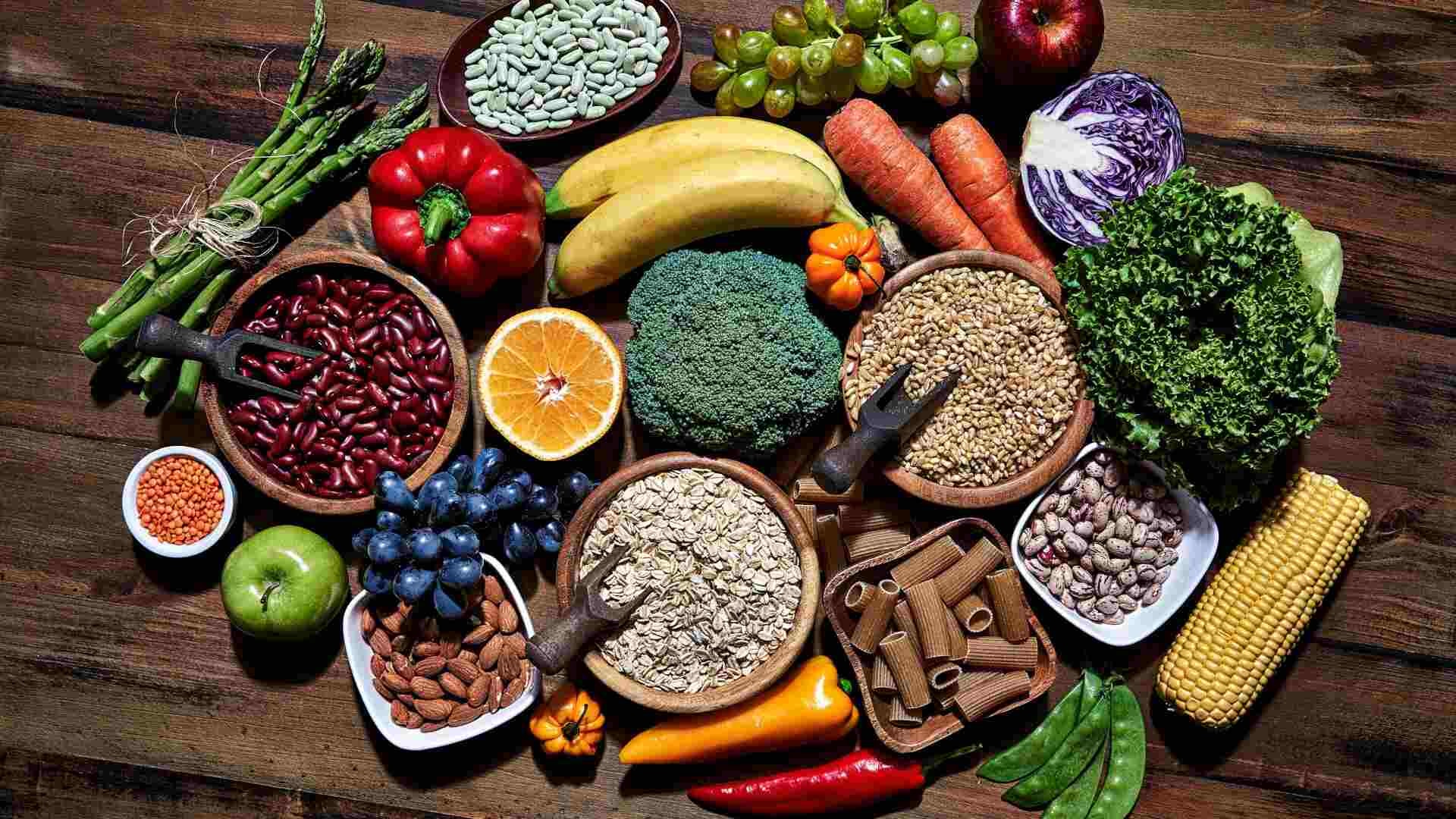
Building your own balanced diet starts with calculating calorie intake and choosing low glycemic index foods like brown rice, green leafy vegetables, and olive oil. Combining fiber rich foods and proper fats ensures long-term diabetes management.
Here’s a step-by-step framework to design a vegetarian chart that keeps sugar steady naturally.
1. Know Your Daily Calorie and Carb Requirement
Understanding calorie needs prevents overloading on carbs and maintains steady energy. Tracking this balance helps achieve stable blood sugar and better metabolism.
Key actions:
-
Calculate your Total Daily Energy Expenditure (TDEE) to set a calorie range.
-
Keep 45–55% of total calories from complex carbohydrates.
-
Monitor sugar intake through small, frequent meals.
This awareness creates a nutritional baseline that guides every decision in your chart.
2. Choose the Right Type of Carbohydrates
Selecting complex carbohydrates such as brown rice or oats instead of refined grains ensures slower glucose absorption. This keeps blood sugar spikes under control while improving digestion.
Practical swaps:
-
Replace white rice with brown rice, quinoa, or millets.
-
Use whole wheat flour instead of refined flour.
-
Limit packaged cereals or instant noodles that raise sugar quickly.
Choosing these slower-burning carbs helps the body maintain energy without strain on insulin.
3. Add Lean Proteins to Every Meal
Including proteins like paneer, lentils, and sprouts helps maintain muscle and delay carb digestion. It improves satiety and balances macronutrients naturally.
Smart additions:
-
Add lentils or dal with every lunch or dinner.
-
Include a protein source like tofu, Greek yogurt, or chickpeas in snacks.
-
Pair proteins with vegetables to reduce overall glycemic response.
A steady dose of protein prevents fatigue and keeps you full between meals.
4. Fill Half the Plate With Vegetables
Green leafy vegetables and colorful produce rich in vitamin C improve immunity and digestion. They slow sugar absorption while delivering essential antioxidants.
Best vegetable picks:
-
Spinach, methi, cabbage, and other non starchy greens.
-
Peppers, gourds, and beans for fiber and volume.
-
Include a salad or steamed vegetables with every major meal.
This balance of fiber and vitamins supports better glucose metabolism and nutrient absorption.
5. Control Portion Size and Meal Timing
Consistent portion sizes and scheduled meals prevent sugar fluctuations and cravings. By maintaining predictable eating times, your body manages insulin more effectively.
Action framework:
-
Divide daily food intake into 3 main meals and 2 small snacks.
-
Eat every 3–4 hours to avoid long fasting gaps.
-
Keep a food diary to notice patterns of hunger or spikes.
A rhythm of eating keeps metabolism steady and reduces unnecessary snacking.
6. Include Healthy Fats in Moderation
Cooking with mustard oil or rice bran oil provides good fats without excess calories. These fats support heart health and improve nutrient absorption.
Smart fat guidelines:
-
Use one type of oil consistently to avoid imbalance.
-
Limit total oil use to 2–3 teaspoons per person daily.
-
Include omega-rich foods like walnuts or flax seeds for added benefits.
The right fats enhance flavor and help stabilize blood sugar while protecting heart function.
7. Plan Smart Snacks
Healthy snacks like chia seeds pudding, roasted nuts, or vegetable sticks curb hunger without raising blood sugar levels. They bridge meal gaps effectively and sustain energy.
Snack structure:
-
Keep snacks under 150–200 calories.
-
Pair fiber and protein, like apple slices with peanut butter.
-
Avoid fried or sugary packaged snacks.
Thoughtful snacking maintains energy and prevents overeating at main meals.
8. Keep Hydration and Routine in Check
Proper hydration keeps digestion smooth and blood sugar stable. Adding small habits like turmeric milk tips at night helps relax the body and improve recovery.
Daily reminders:
-
Drink 2.5–3 liters of water across the day.
-
Limit caffeine to two cups to avoid dehydration.
-
Maintain a fixed bedtime and morning wake-up routine.
This steady routine supports hormonal balance and ensures the body processes nutrients efficiently.
Creating your own vegetarian diet chart is less about restriction and more about rhythm. Once these steps turn into habit, food stops feeling like a rulebook and becomes a system that supports calm, consistent blood sugar control.
This foundation naturally leads to understanding the common mistakes diabetic patients make with their diet and how small corrections can protect progress over time.
Don’t want to calculate macros manually? Balanced Bite can build your personalized diabetic meal chart in minutes
10 Common Diet Mistakes Diabetic Patients Should Avoid

Even well-meaning diets can fail when refined grains, trans fats, fried foods, or sugary drinks sneak in. These habits spike blood sugar levels, cause high blood sugar, and make diabetes harder to control.
Spotting these traps early will show how small corrections can restore stability and simplify daily food decisions.
1. Skipping Meals or Eating at Irregular Times
Skipping meals causes sharp drops in glucose followed by overeating, creating a cycle of highs and lows that strains insulin response. Eating on time allows the body to use sugar efficiently and keeps energy steady throughout the day.
-
Eat every 3–4 hours, even if it’s a light snack.
-
Never skip breakfast, as it sets the rhythm for glucose balance.
Keep a consistent eating window to support insulin stability.
2. Overconsuming Refined Carbohydrates and Sugary Foods
Refined carbs and sweets digest quickly, leading to rapid spikes in blood sugar. These foods, like pastries or sweetened cereals, provide empty calories that disrupt balance.
-
Replace refined grains with whole grains or brown rice.
-
Limit desserts and candies to rare occasions.
-
Avoid sugary drinks such as sodas and packaged juices that worsen insulin resistance.
Balanced choices maintain sugar control without cutting satisfaction.
3. Ignoring Portion Sizes and Overeating “Healthy” Foods
Healthy foods can still raise blood sugar if consumed in excess. Even fruit or brown rice needs moderation. Portion control prevents glucose overload while ensuring you get the right mix of nutrients.
-
Use smaller plates to visually reduce portions.
-
Focus on balanced meals instead of oversized servings.
-
Stop eating when you’re satisfied, not when you’re full.
This small adjustment supports gradual and consistent progress.
4. Depending Too Much on Processed or Packaged Foods
Processed foods are high in sodium, preservatives, and trans fats that interfere with insulin and heart health. They make portion control harder and often lead to cravings.
-
Read labels and avoid items with added sugars or hydrogenated oils.
-
Choose home-cooked versions of snacks and meals.
-
Replace processed snacks with roasted seeds or nuts.
Each fresh substitution keeps your diet nutrient-rich and predictable for blood sugar balance.
5. Avoiding All Carbs Instead of Choosing the Right Ones
Eliminating all carbohydrates disrupts energy supply and causes fatigue. Complex carbohydrates provide steady energy without sugar spikes.
-
Include small portions of oats, quinoa, or millets.
-
Avoid refined carbs and focus on high-fiber options.
-
Combine carbs with protein or fat for slower glucose release.
Smart carbs create steady blood sugar, which helps prevent fatigue and cravings.
6. Neglecting Protein and Fiber Intake in Daily Meals
Protein and fiber are essential for digestion and long-lasting energy. Ignoring them leads to faster glucose absorption and hunger spikes.
-
Add lentils, sprouts, and low-fat dairy to every meal.
-
Include salads or steamed vegetables for fiber.
-
Choose whole fruits over juices to retain fiber.
Prioritizing these nutrients builds stronger metabolic control.
7. Drinking Fruit Juices or Sweetened Beverages Frequently
Even natural fruit juices can raise blood sugar rapidly due to concentrated sugars. Sweetened drinks add unnecessary calories that hinder progress.
-
Drink water or green tea instead of packaged drinks.
-
Flavor water naturally with mint, lemon, or cucumber slices.
-
Remember to avoid sugary drinks entirely for better control.
This single habit change has one of the biggest impacts on daily glucose stability.
8. Using Too Much Oil or Ghee in Cooking
Overusing oils or ghee adds unnecessary calories and delays digestion. Heart-friendly fats keep meals satisfying without harm.
-
Use mustard oil or rice bran oil in small amounts.
-
Avoid deep frying and prefer shallow sautéing or grilling.
-
Keep total oil intake below 3 teaspoons per day.
Moderation helps the body absorb nutrients without weight gain or insulin strain.
9. Not Drinking Enough Water Throughout the Day
Dehydration raises blood sugar by thickening the blood and slowing glucose movement. Hydration helps kidneys filter excess sugar efficiently.
-
Drink a glass of water before every meal.
-
Keep a bottle nearby and sip through the day.
-
Limit caffeine and alcohol to avoid fluid loss.
Consistent hydration complements every other step in your diabetic routine.
10. Forgetting to Monitor Blood Sugar Levels After Meals
Regular monitoring helps identify patterns of spikes or drops. Without it, even a well-balanced diet can miss hidden imbalances.
-
Check post-meal glucose at least twice a week.
-
Track readings to notice reactions to different foods.
-
Adjust meals based on these patterns with your nutritionist.
Monitoring is not just data collection, it’s feedback that refines your diet for better control.
Awareness of these mistakes builds the discipline needed for steady results. Once these patterns are corrected, the next focus shifts toward long-term strategies that help maintain balanced blood sugar with consistency and calm.
Sustainable Steps for Better Blood Sugar Control Over Time

Real diabetes management depends on more than food. Maintaining healthy weight, drinking green tea, balancing essential nutrients, and protecting heart health all sustain overall well-being.
These habits build a long-term rhythm that keeps blood sugar stable and supports lasting change through consistency and mindful lifestyle choices.
1. Monitor Blood Sugar Levels Regularly
Regular checks reveal how food, exercise, and stress affect your glucose levels. Monitoring helps you understand personal triggers and take early corrective steps.
-
Check fasting and post-meal readings at least twice a week.
-
Record results to identify patterns over time.
-
Use these insights to fine-tune diet and physical activity.
Routine awareness builds accountability and keeps sugar levels predictable.
2. Schedule Routine Health Checkups
Regular medical reviews help detect early signs of imbalance. They provide a broader view of your progress beyond daily readings.
-
Get HbA1c tests every three months for long-term glucose control.
-
Include cholesterol, kidney, and heart function assessments.
-
Discuss medication or diet adjustments as needed.
Consistent tracking through professional guidance prevents small issues from becoming long-term setbacks.
3. Stay Consistent With Your Diet Plan
A stable diet helps your body adapt to a predictable energy rhythm. Consistency reduces stress on the pancreas and improves overall control.
-
Follow similar meal timings and portion sizes each day.
-
Keep core foods like vegetables, whole grains, and proteins constant.
-
Avoid frequent changes in carb intake or meal structure.
When meals follow a steady structure, blood sugar fluctuations become easier to manage.
4. Include Regular Physical Activity
Exercise enhances insulin sensitivity and helps regulate body weight. Even light, daily movement supports glucose uptake into muscles.
-
Aim for at least 30 minutes of moderate activity, five days a week.
-
Mix aerobic exercises like walking with light resistance training.
-
Stay active between tasks to avoid long sedentary periods.
Physical activity anchors every other habit, turning control into a sustainable process.
5. Manage Stress Through Mindful Practices
Stress hormones directly affect glucose levels. Calming routines lower cortisol and bring stability to daily readings.
-
Practice deep breathing or meditation for ten minutes a day.
-
Take short breaks to relax between long tasks.
-
Spend time outdoors to reset your focus and energy.
When the mind stays balanced, sugar levels often follow the same rhythm.
6. Keep Track of Sleep Quality and Duration
Sleep affects metabolism and insulin sensitivity. Poor rest leads to hormonal imbalance and sugar instability.
-
Aim for 7–8 hours of uninterrupted sleep each night.
-
Maintain a fixed bedtime and wake-up schedule.
-
Avoid screens and heavy meals before bed.
Rested nights create calmer mornings and more predictable glucose control.
7. Stay Hydrated and Maintain Electrolyte Balance
Water supports kidney function and helps flush excess glucose from the body. Electrolytes prevent fatigue and dehydration-related sugar spikes.
-
Drink water regularly through the day, not all at once.
-
Add coconut water or lemon water for natural electrolytes.
-
Limit caffeine to maintain hydration levels.
Hydration keeps metabolism active and complements every dietary effort.
8. Reassess Your Diet Chart Every Few Months
Your body’s needs change with age, activity, and environment. Reviewing your diet ensures it still aligns with your current goals.
-
Recheck calorie and nutrient intake quarterly.
-
Note any changes in blood sugar response or energy levels.
-
Make gradual adjustments rather than sudden shifts.
Small, timely tweaks prevent stagnation and keep progress moving forward.
9. Consult a Nutritionist for Personalized Adjustments
Professional input helps refine the finer details of your chart. A nutritionist can detect patterns and modify meals to match your metabolism.
-
Schedule consultations at least twice a year.
-
Share glucose data and meal logs for accurate guidance.
-
Use expert advice to stay current with new food strategies.
Guided changes build confidence and help sustain progress without confusion or trial and error.
Long-term diabetes management is built on awareness and adaptability. Once these practices become part of daily life, maintaining healthy blood sugar no longer feels like effort but a balanced way of living
FAQs
1. What Is the Difference Between a Diabetic Food Chart and a Regular Healthy Diet Plan?
A diabetic food chart focuses on controlling blood sugar levels through portion balance, low-GI foods, and carb regulation, while a regular healthy diet emphasizes general wellness. It’s more structured around meal timing and carb-to-protein ratios to maintain stable glucose levels.
2. Can the Indian Diabetic Diet Chart Be Followed by Non-Vegetarians Too?
Yes, the Indian diabetic diet chart can easily be adapted for non-vegetarians. Simply replace plant proteins like paneer or lentils with grilled fish, eggs, or skinless chicken. The core goal stays the same, balanced meals that regulate blood sugar effectively.
3. How Often Should You Update Your Diabetic Food Chart Based on Blood Sugar Readings?
Review and adjust your diabetic food chart every two to three months. Frequent updates help align your diet with any changes in fasting or post-meal sugar levels, medication, or activity patterns, keeping your meal plan effective and personalized.
4. Are There Any Travel-Friendly Food Options That Fit a Diabetic Diet Plan?
Yes, carry portable foods like roasted chickpeas, unsalted nuts, protein bars, whole-grain sandwiches, or fruit with nut butter. These keep you full and prevent sudden sugar spikes, making travel easier without losing control of your diet plan.
5. What Are Some Quick Homemade Drinks That Help Stabilize Blood Sugar Levels?
Try methi seed water, cinnamon tea, amla juice, or buttermilk with a pinch of cumin. These homemade drinks improve insulin sensitivity, aid digestion, and support natural blood sugar control when combined with a balanced diabetic diet plan.
Conclusion
Healthy eating for diabetic patients isn’t about perfection, it’s about rhythm and awareness. A sugar patient diet chart that fits naturally into your vegetarian lifestyle gives you both control and comfort.
The smartest approach is to make your meals predictable, your choices intentional, and your routine sustainable. Each balanced plate you build is a quiet act of prevention that supports steady energy, a calm mind, and long-term well-being.
Consistency, not complexity, is what turns this plan into a lifestyle, one that helps your body and blood sugar work in harmony every single day.
If you’re ready to take charge of your diabetes the smarter way, let Balanced Bite help you turn this diet plan into a real routine






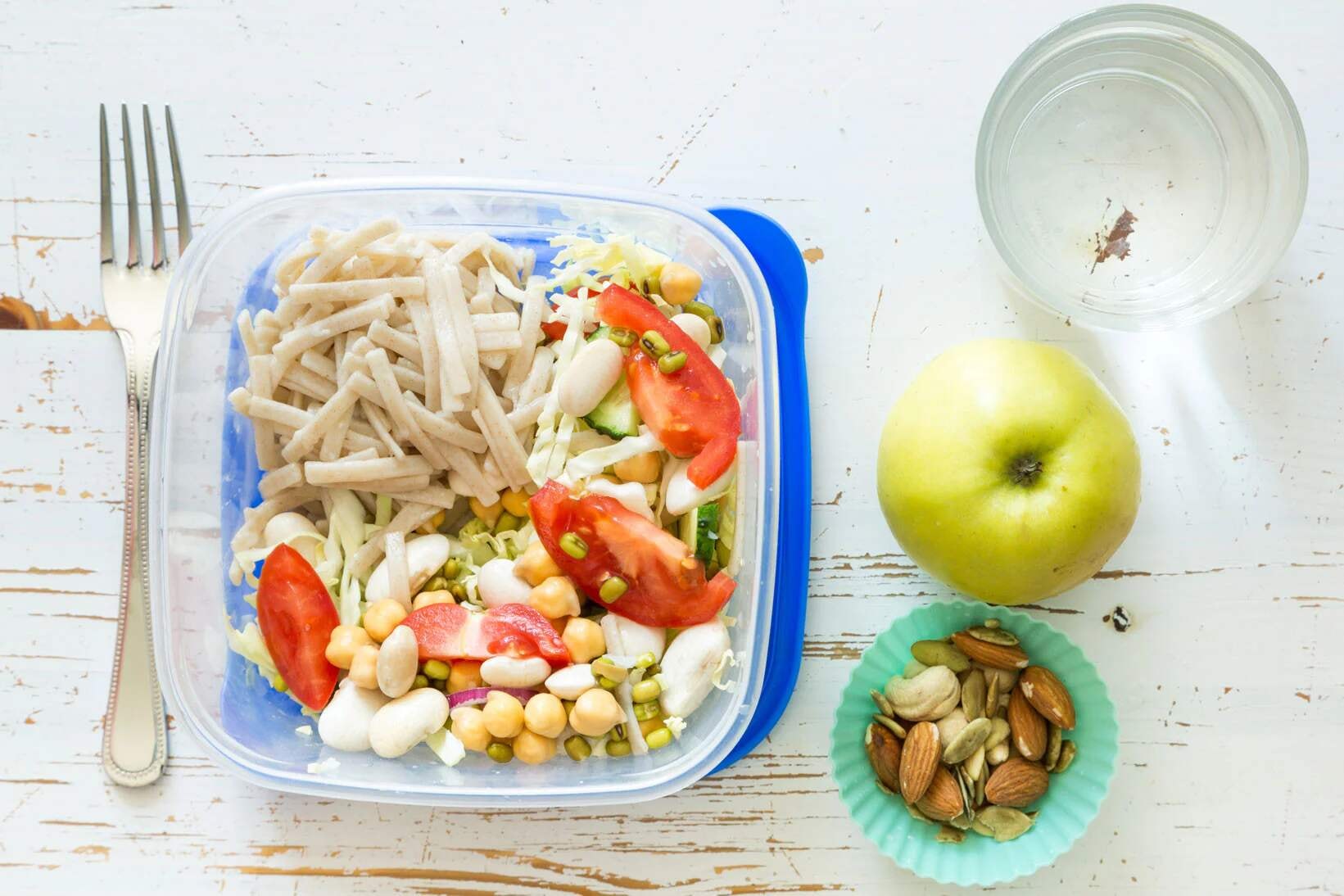

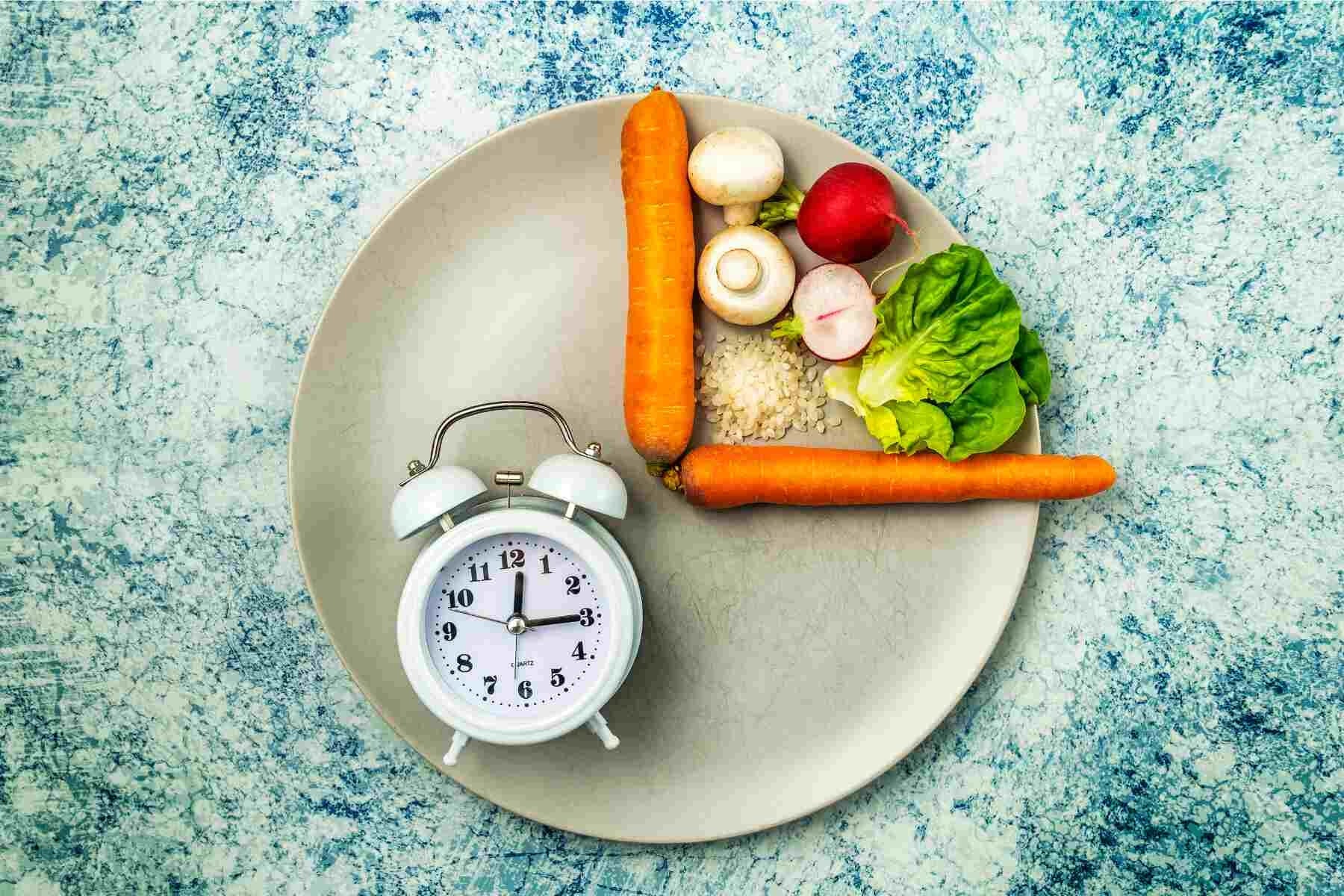

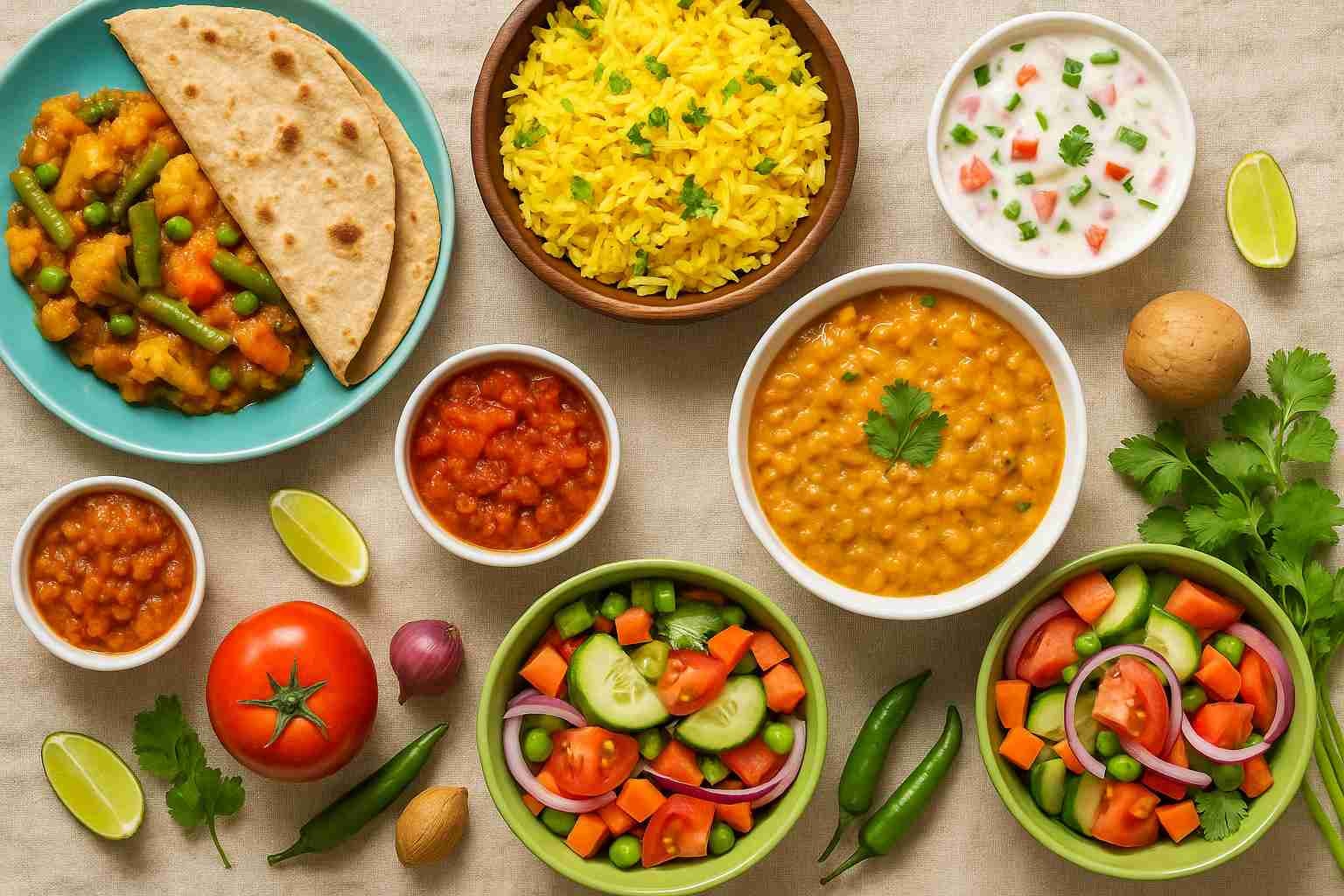




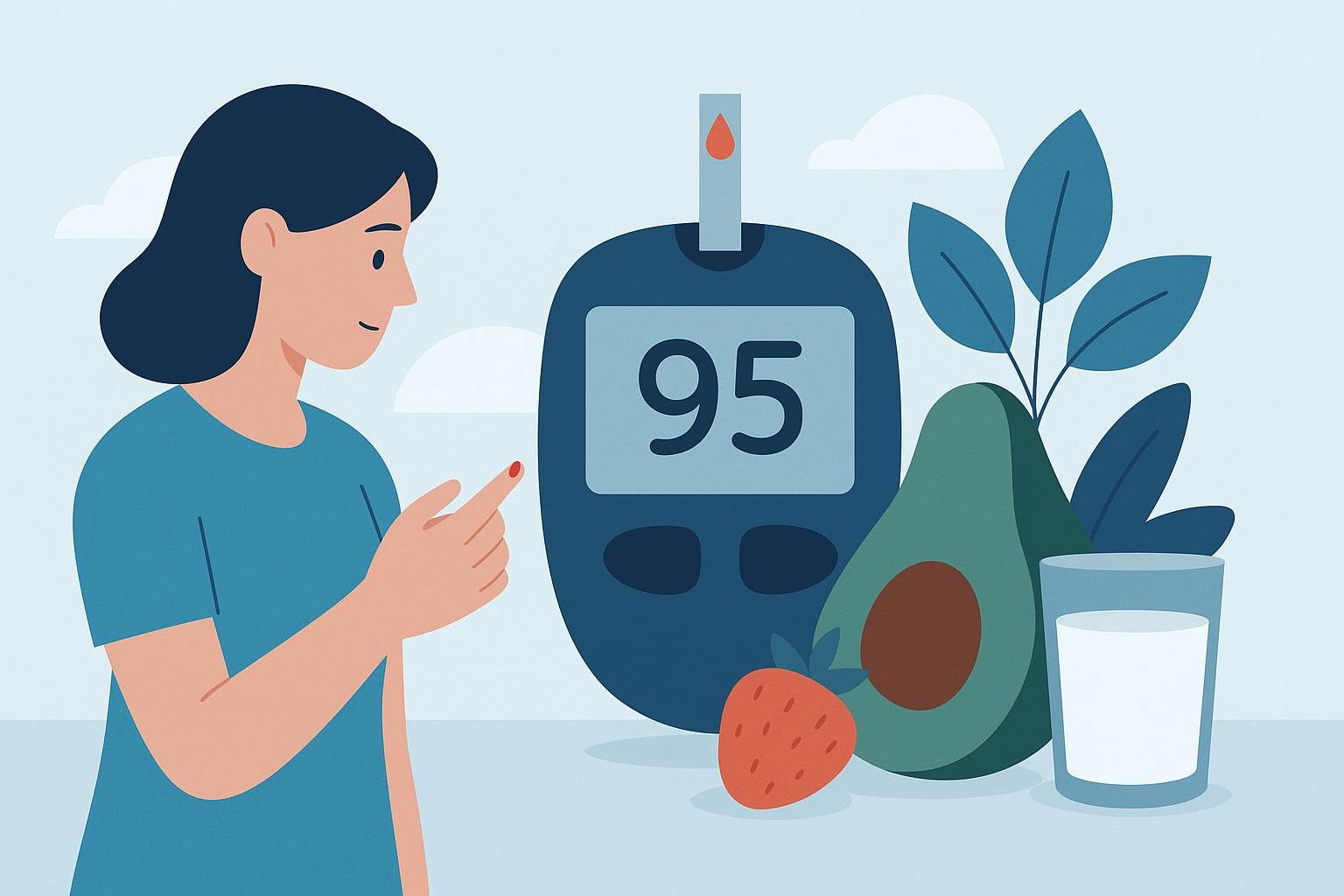

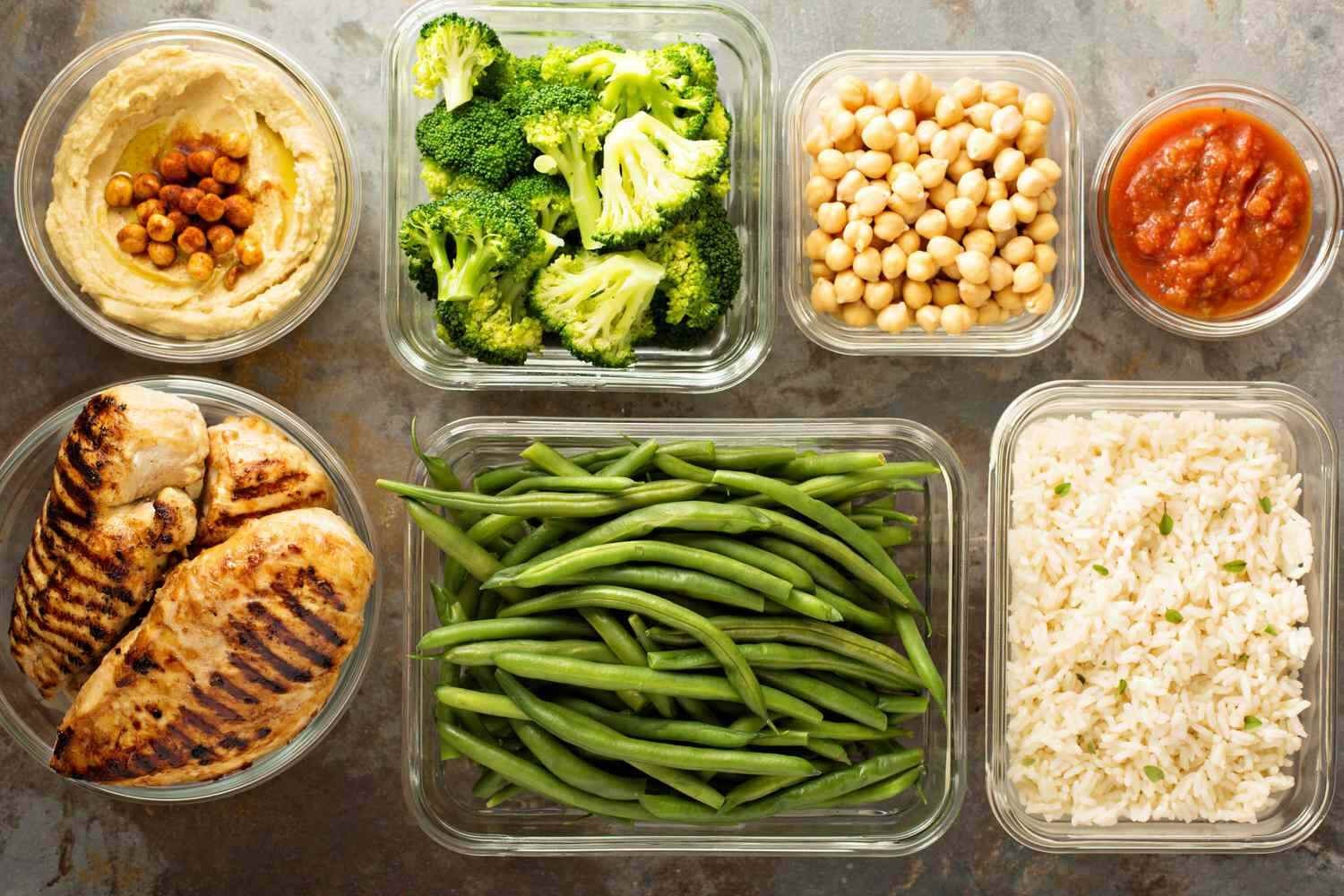
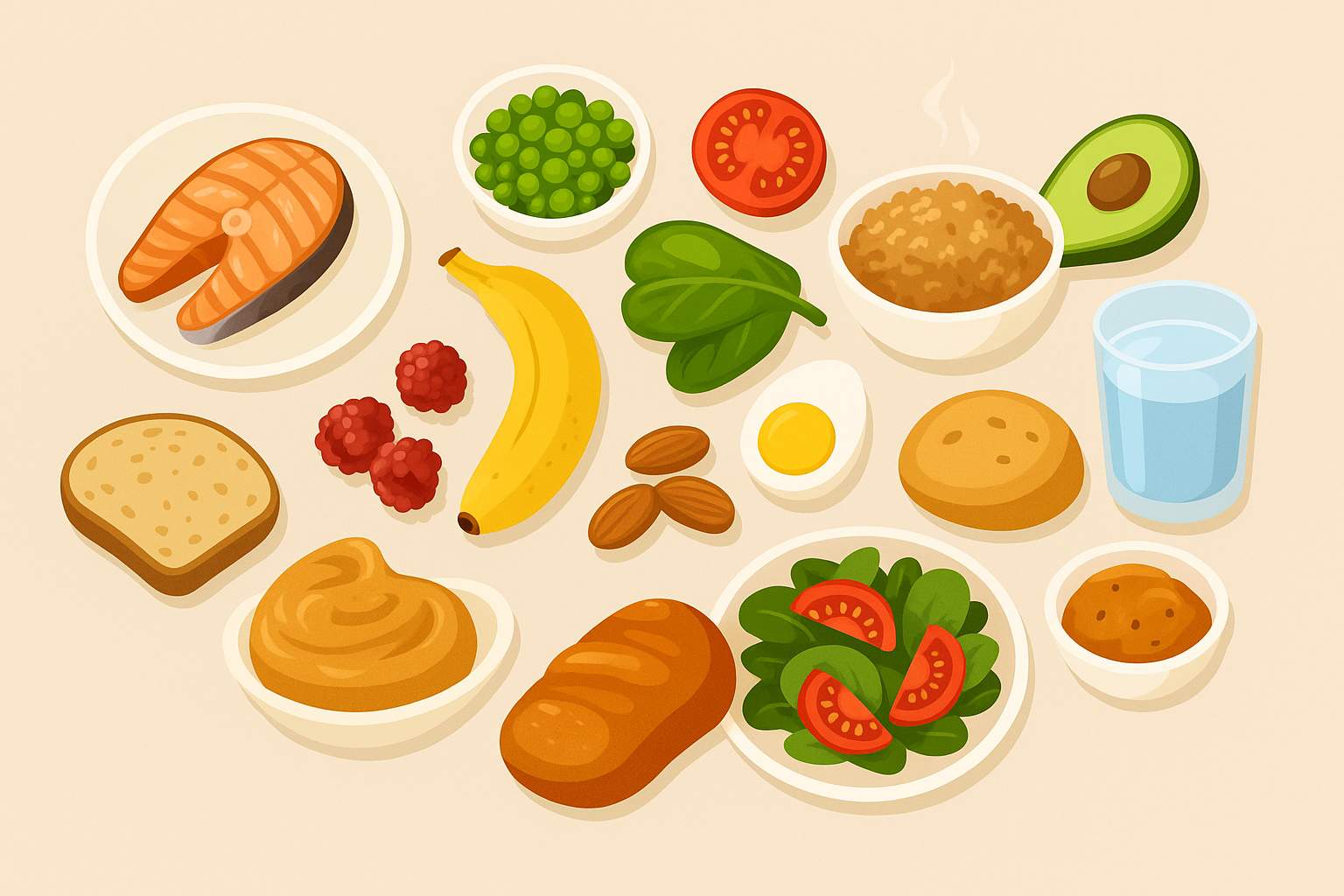

Leave a comment
Translation missing: en.blogs.comments.discription